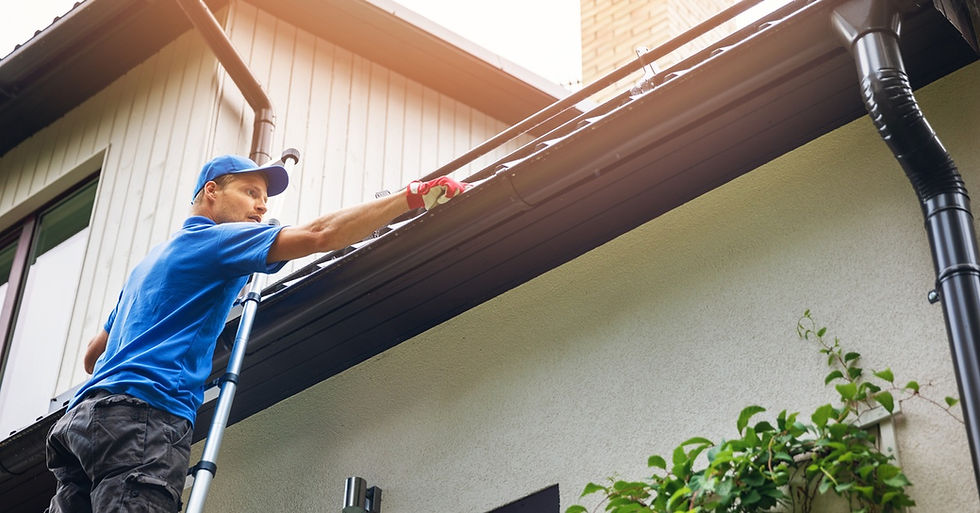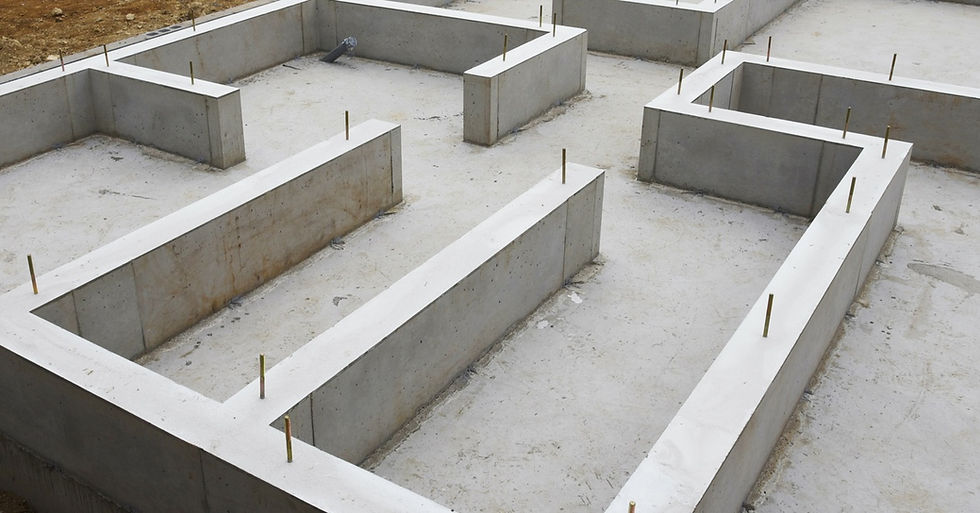Signs It’s Time To Replace Your Chimney Flashing
- Victoria Scott
- May 8
- 5 min read

Your chimney flashing plays a vital role in protecting your home from water damage. This metal barrier is positioned at the base of your chimney and prevents moisture from seeping into vulnerable areas of your roof. Over time, flashing deteriorates due to exposure to the elements, leaving your home vulnerable to leaks, mold, and costly repairs.
Recognizing the warning signs will help you know when it’s time to replace your chimney flashing. Watching for these signs will help you take action early, protecting your home’s integrity and avoiding unnecessary expenses.
Visible Rust or Corrosion
Rust spots or corrosion on your chimney flashing are clear indicators of material degradation. Over time, constant exposure to moisture weakens the metal, leading to holes or cracks that can allow water to seep into your home. You should also quickly take care of small rust patches to prevent them from spreading and causing more extensive damage.

Water Stains on Walls or Ceilings
If you notice water stains inside your home, especially near the chimney area, this is often a sign that water is bypassing your flashing. These stains may appear as discolored patches or streaks on walls and ceilings, and they can worsen over time if left unresolved. Addressing this issue promptly not only prevents structural damage but also helps maintain the aesthetic appeal of your home.
Missing or Loose Flashing
High winds, storms, or extreme weather conditions can loosen or completely dislodge sections of your chimney flashing. When flashing pieces go missing, it creates gaps that allow moisture to enter your roofing system. Promptly replacing missing or loose flashing ensures your home remains protected against leaks and other water damage.
Cracked Caulking or Sealant
The sealant or caulking around your chimney flashing acts as a secondary barrier against water intrusion. Over time, this material can dry out, crack, or peel due to weather fluctuations and UV exposure. When the sealant fails, it leaves your flashing vulnerable to leaks. Re-sealing or replacing the flashing can restore its watertight protection.
Roof Leaks Near the Chimney
Leaks near your chimney are one of the most obvious and alarming signs of failing flashing. If you notice pooling water, drips, or damp spots in your attic or around the chimney, it’s time to inspect the flashing. Ignoring these leaks could damage your roof, walls, insulation, and even the foundation of your home.
Warped or Bent Flashing
Flashing can warp or bend due to pressure from debris, heavy impacts from falling branches, or the repeated freeze-thaw cycles that occur during winter. Each of these forces can distort the flashing, preventing it from forming a snug, watertight seal around your chimney.
Even small distortions to flashing create entry points for water. Replacing warped or bent flashing not only restores its protective function but also extends the overall lifespan of your roof system, ensuring your home remains shielded from the elements.
Peeling Paint Inside Your Home
If the paint on your walls or ceilings near the chimney begins to peel, bubble, or crack, it’s often a sign of moisture infiltration through the flashing. These unsightly issues not only affect the appearance of your home but can also indicate deeper problems. If left unchecked, the intruding moisture will cause damage to your home’s interior, including:
Weaken drywall
Warp wooden frames
Mold growth
Catching this warning sign early and repairing or replacing the flashing prevents further damage to your home’s interior and protects its structural integrity.
Shingle Damage Around the Chimney
The shingles surrounding your chimney play an important supporting role in maintaining the effectiveness of the flashing. If you notice cracked, curling, or missing shingles in this area, it could be a sign that water has already started to compromise your roof.
Damaged shingles expose the underlayment and flashing to direct water contact, increasing the risk of leaks and further deterioration. Repairing or replacing both the flashing and the shingles around the chimney ensures your roof remains watertight and protected against further damage.
Flashing Appears Pulled Away
Flashing that appears to have separated or pulled away from the chimney or roof surface no longer provides a secure seal. This separation creates openings where water can bypass the flashing and seep into your home, leading to leaks, rotting, or even structural damage over time. The longer these openings remain exposed, the more extensive the potential damage becomes, potentially affecting your attic, insulation, and even interior walls with costly water damage.
Flashing Installed Improperly
Improperly installing chimney flashing is a common problem that leads to premature failure and costly repairs. Poorly fitted or inadequately secured flashing may not create a tight seal against the chimney or roof, allowing water to slip through and cause damage.
Signs of improper installation often include irregular gaps, loose edges, or visible misalignment. If you suspect the flashing wasn’t installed correctly, replacing it with professional flashing can save you from recurring leaks and unexpected expenses.

Ice Damming Issues in Winter
Ice dams forming along your roofline near the chimney during winter can indicate flashing problems. Ice dams occur when snow melts and refreezes at the roof’s edge, trapping water behind it. This trapped water can sneak into weak points in the flashing and cause leaks. Addressing flashing issues before the winter season begins can help prevent ice dams and the costly repairs associated with water infiltration.
Frequent Repairs in the Past
If you’ve had to repair your chimney flashing multiple times, it’s a strong indication that the material has reached the end of its lifespan. Flashing that requires frequent patching is no longer reliable and poses a consistent risk of water damage. Rather than continuing to invest in temporary fixes, replacing the flashing entirely offers a more durable and long-lasting solution. Upgrading to high-quality materials and ensuring proper installation reduces maintenance needs and provides better protection for your home.
Aging and Wear Over Time
No material lasts forever, and chimney flashing is no exception. Over the years, exposure to harsh weather conditions, temperature fluctuations, and general wear and tear weakens the flashing. Even if there are no visible signs of damage, aging flashing becomes increasingly prone to cracks, leaks, and corrosion. Thankfully, upgrading to new, durable flashing ensures your roof stays protected and helps avoid unexpected repair costs in the future.
Your chimney flashing is one of the most critical components in protecting your home from water damage. It serves as the first line of defense against moisture and prevents costly issues like leaks, mold growth, and structural degradation.
Stay on the lookout for the signs that it’s time to replace your chimney flashing, and if you spot any of them, take action sooner rather than later. With Omega Construction of MI on your side, managing your chimney masonry and protecting your home can be easy. Work with us and take proactive steps so you can save time and money in the long run!




Comentários